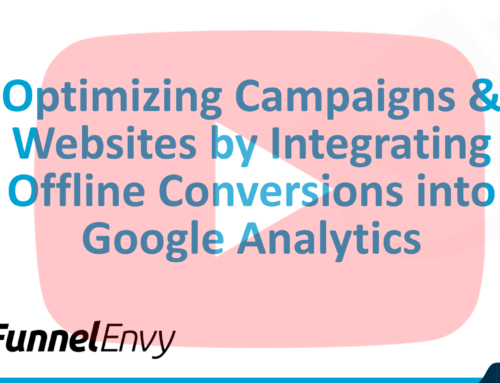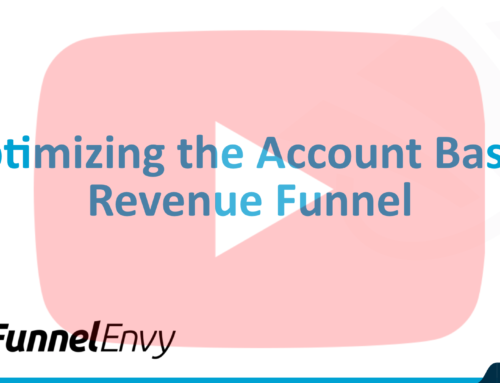What if you could use your website to deliver a personal, relevant experience to each of your visitors?
Your website feels like a one-on-one conversation instead of a “billboard on the side of the road” sales pitch. Visitors become more receptive to buy from you because your approach recognizes them as individuals with unique needs. That’s what strategic customer segmentation can do for you.
Most businesses don’t do this. Their websites treat their “target market” like they’re identical parts from an assembly line instead of a diverse group of people.
That approach kills conversion rates. The gap between your prospects’ unique tastes and what they find on your website weakens your sales message. The smaller the gap, the more likely they become your customers.
Be Relevant, or Be Forgotten
People expect an experience that’s relevant to them when they browse your website.
If visitors can’t find the content they’re looking for – if they have to dig through information that doesn’t appeal to their specific situation – they don’t spend more than a few seconds trying before they leave for a better-targeted site.
This is what happens when businesses don’t differentiate their website visitors. Because they don’t track what drives people to their site and what they do once they get there, they can’t tailor their content to appeal to visitors from unique angles.
Why Marketers Don’t Segment Their Traffic
Most online marketers say they understand the importance of analyzing and segmenting their traffic, but few of them actually do it. Why is that?
Things are different offline; we have a better idea why someone visits a business. Someone at the grocery store is probably there to buy groceries; someone who makes an appointment with a divorce attorney… well, you get the idea.
It’s harder to figure out people’s motives when they visit your “virtual storefront” online.Maybe they’re just looking for information. Maybe they’re ready to buy. Or maybe they just want your email address so they can complain.
There’s also an impression that market segmentation is next to impossible if you aren’t a technical wizards. Businesses hear about the importance of segmentation, promise they’ll get around to it later, and write it off as too difficult.
The Solution: Smart Analytics and Customization
The narrower you can slice your website visitors into “types,” the better you can appeal to them and increase your conversions. Here’s Avinash Kaushik’s take on it:
The best ideas for taking action come from the process of segmentation. Put simply it is taking the entirety of the data on your website and breaking it down into meaningful chunks. Knowing your overall conversion rate is 2%, useless. Knowing the conversion rates of your main acquisition channels are: Paid Search: 9%, Direct: 6%, Affiliate: 0.58%, priceless.
Avinash Kaushik
Good news: you don’t have to be a technical genius to break down analytics data, use your insights to spot customer types, and customize your sales messages for maximum profit.
Step 1. Segmentation
Analytics platforms like Google Analytics give online businesses an edge over their brick and mortar counterparts: access to a lot of data about their visitors.
But this data is only an edge when you break it down into pieces that make sense. If you look atall the data, it’s enough to overwhelm even a seasoned online marketer.
Bain Capital discussed work they did for an electronics retailer. Using analytics data from online sales, they found that only 2 out of Bain’s 5 customer segments (24% of the total customers) were generating all of the retailer’s profits online.
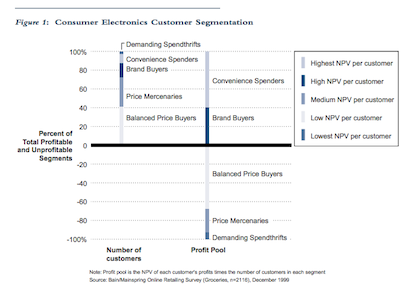
The retailer was much better off focusing its online marketing efforts on acquiring and retaining those types of customers. And they would’ve never found this out if Bain hadn’t broken down their analytics data by customer type.
Segmenting Strategy
There isn’t a set formula to follow when it comes to segmenting your visitors using analytics data. What will work best depends a lot on your particular niche and target customers.
You can start breaking your market down by using these broad categories:
- Demographic: age, gender, geographic location, occupation, income level, etc.
- Traffic source: how they found your site, whether it’s through search engines, PPC campaigns, email marketing, social media, or other sources
- Behavioral: first-time vs. repeat visitors, website entry points, came from a specific referral URL, average page views, frequency of visits, average duration of visits, bounce rate, etc.
- Outcome: customers vs. non-customers, customers of a particular product or service, customers who spent over a certain amount, etc.
Once you have a basic idea of your segmenting strategy, it helps to drill down and get specific.What information would be valuable to know? Maybe you want to know, on average, how many visits it takes before someone converts. Or how many people get to your shopping cart page before abandoning it.
How to Segment in Google Analytics
After you figure out how you want to break your data down, it’s time to configure your analytics to make it happen.
You can do this by creating filters using Google Analytics’ Advanced segments that match your criteria. If you haven’t registered for Google Analytics, it’s free and only takes a few minutes toinstall a tracking code on your site.
Once you’ve done that, log in to your account and click the dropdown arrow to access the Advanced Analytics mode. It comes with 22 built-in filters to choose from.
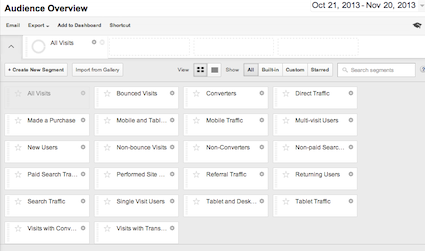
You can also click the import gallery button to import popular filters others have created.
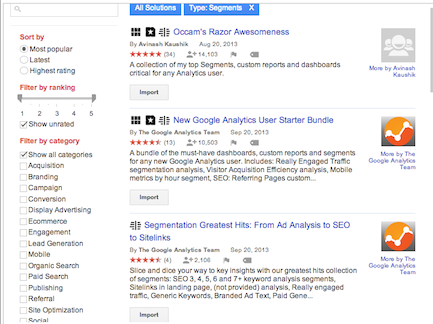
The real power of Advanced Analytics is it gives you the ability to create custom filters of your own. This excellent guide from KISSmetrics walks you through it step by step.
Finally, you can set up a custom filter to eliminate traffic spikes caused by bots that distort your data. Check out this article for a detailed guide how.
Step 2. Use Your Data to Create Personalized Sales Experiences
Now that you’ve broken down your traffic data into meaningful chunks, you can analyze it, pick out common patterns, and find opportunities to exploit.
The data determines how to type your customers and customize their experience. So the types you end up with might not be what you initially expected.
The closer you can get to replicating a one-on-one sales experience with each visitor, the more compelling your website will be.
Ways You Can Personalize Visitor Experience
Options to tailor your prospects’ online experience are limited only by your imagination. If you can think of creative ways to give people exactly what they want, you can boost your revenue substantially.
Here are a few ways you can do this:
- Send new visitors to a special page: you could send first-time visitors to a welcome area and make a special offer there.
- Send visitors from different traffic sources to separate landing pages: someone who comes from a social media site probably isn’t as far along in the buying process as someone who clicks on a PPC ad. Send them to different pages to give them content they’d find most valuable.
- Target your email marketing campaigns: the ecommerce retail site SwayChic customized their email campaigns for different customer segments, which tripled their revenue and increased their average open rates by 40%.
- Retargeting: you can segment your retargeting ads depending on where the visitor spent the most time on your site and which pages they viewed.
- Deliver customized recommendations based on customers’ purchase history: Amazon is the master at this; take a page from their playbook and send your customers special deals related to previous purchases.
- Target shopping cart abandoners: if someone got all the way to your shopping cart, they’re more than casually interested. You could send them a special promotion to get them to come back with their wallets open.
- Make personalized timed offers: a time-sensitive offer tailored for an upcoming special occasion (birthday, anniversary, etc.) can be almost irresistible.
Break It Down and Apply It for More Conversions
There’s no shortage of data available to you online; the key is breaking it down into chunks that are meaningful to you, and to apply the insights you gain to deliver the most relevant, personalized website experience possible.
What is your favorite way to segment your website visitors? Demographic? Purchase history? Something else? Leave us a comment below and let us know!





